Robert Ireland (born 1878) was the third generation to run the business and did so until his retirement, when he and wife Jane (nee Cunningham) moved to 'Elmscroft' on Leven Road in Lundin Links, where Robert died on 24 June 1937, aged 59. By this time his sons James and William Cunningham Ireland were living at 'Grove View' and were fourth generation bakers. The advert above dates from circa 1930, while the detailed image below dates to the early days of Robert Ireland's time in charge. Visible on the hanging sign to the left of the entrance is the name 'Grove Bakery'. The Grove is the area directly opposite the baker's shop (see wooded area on the left of image above) which was the village bleaching ground prior to the building of the house named The Grove for Evelyn Baxter.
The business left the hands of the Ireland family in the 1960s, when William Tullis & son, baker of Kennoway took over for a few years, prior to the closure of the shop, which was then converted into a house.

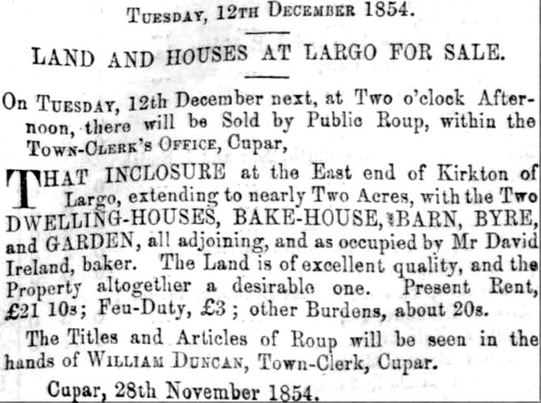
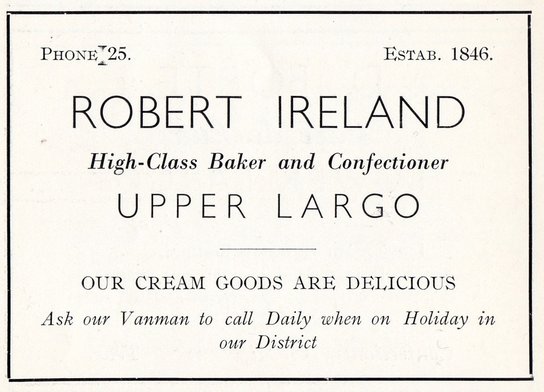
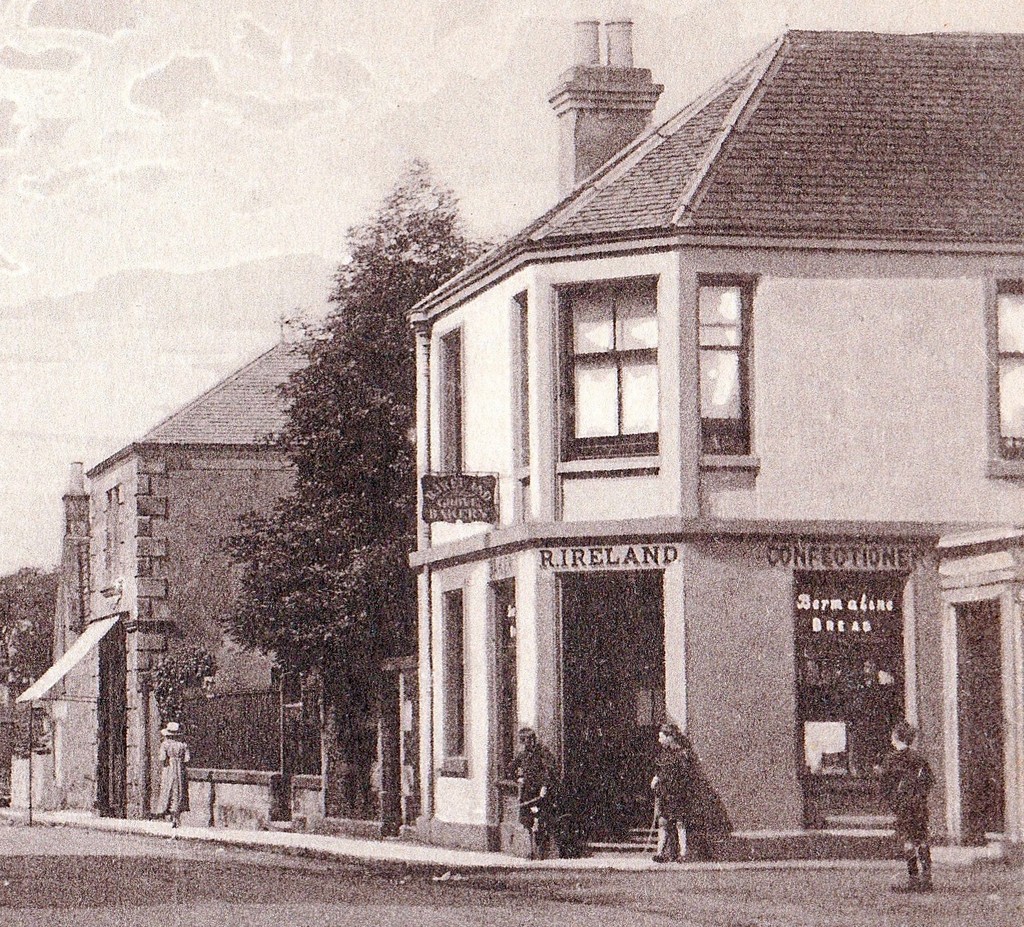
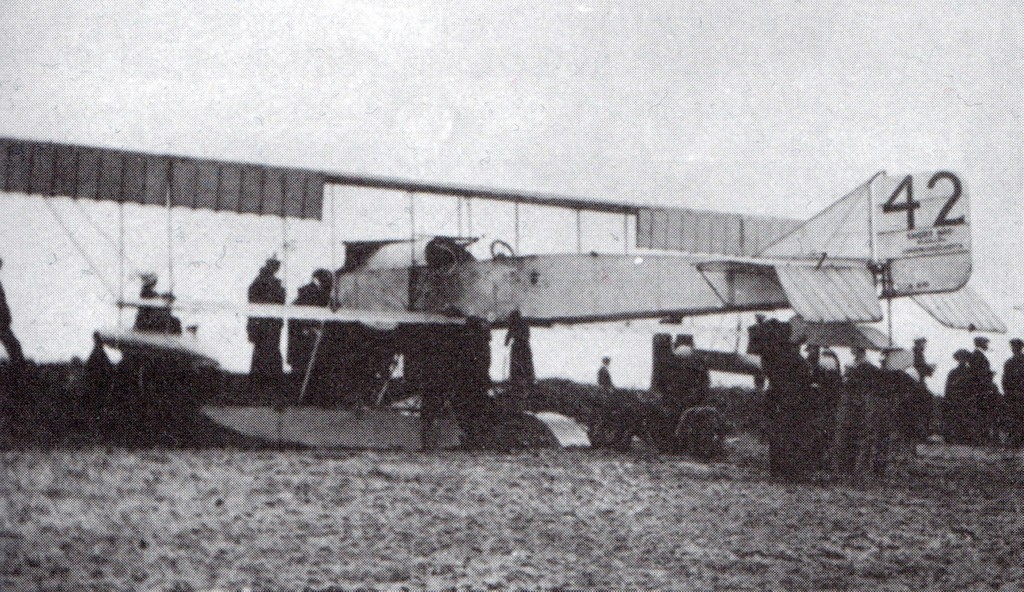

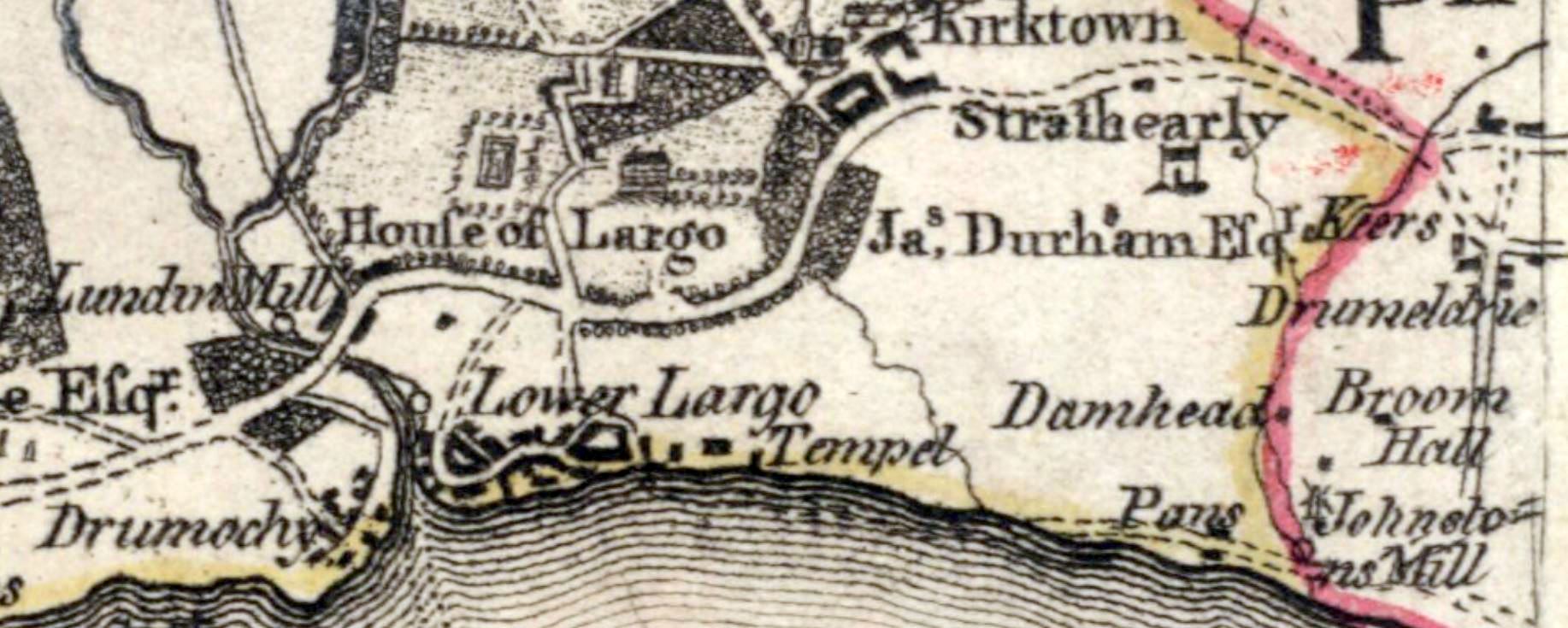
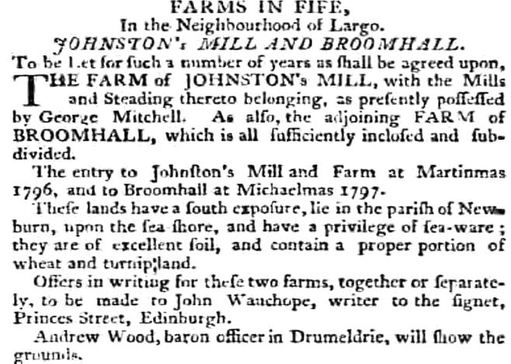
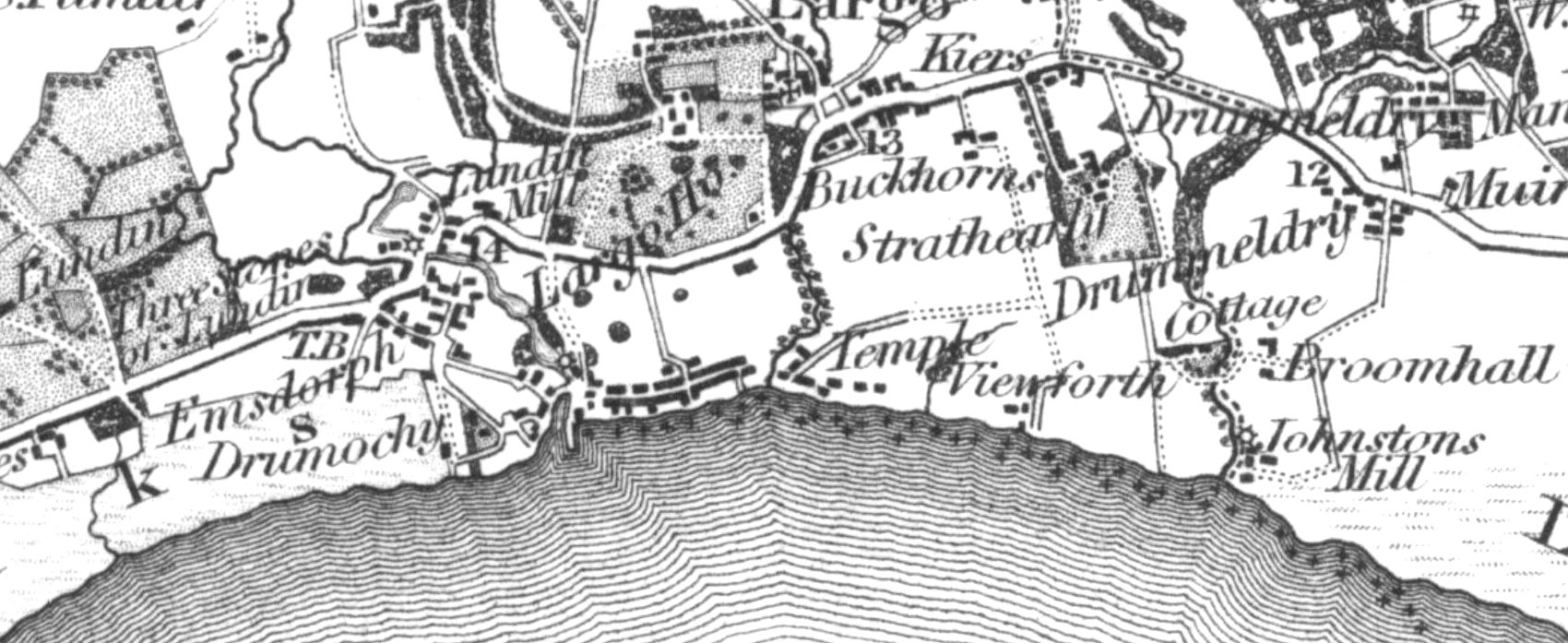
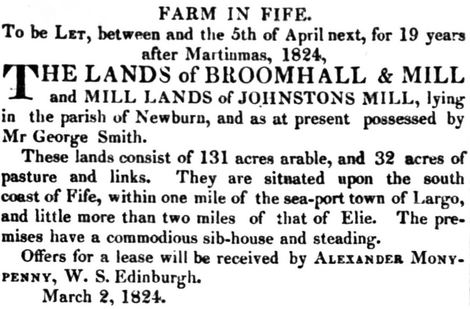

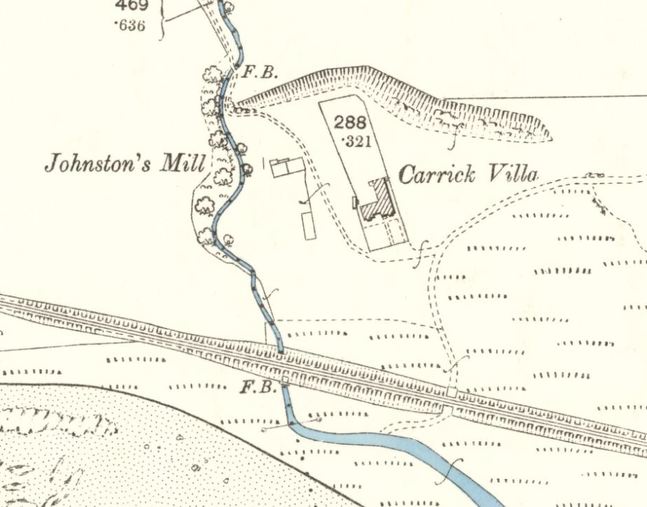


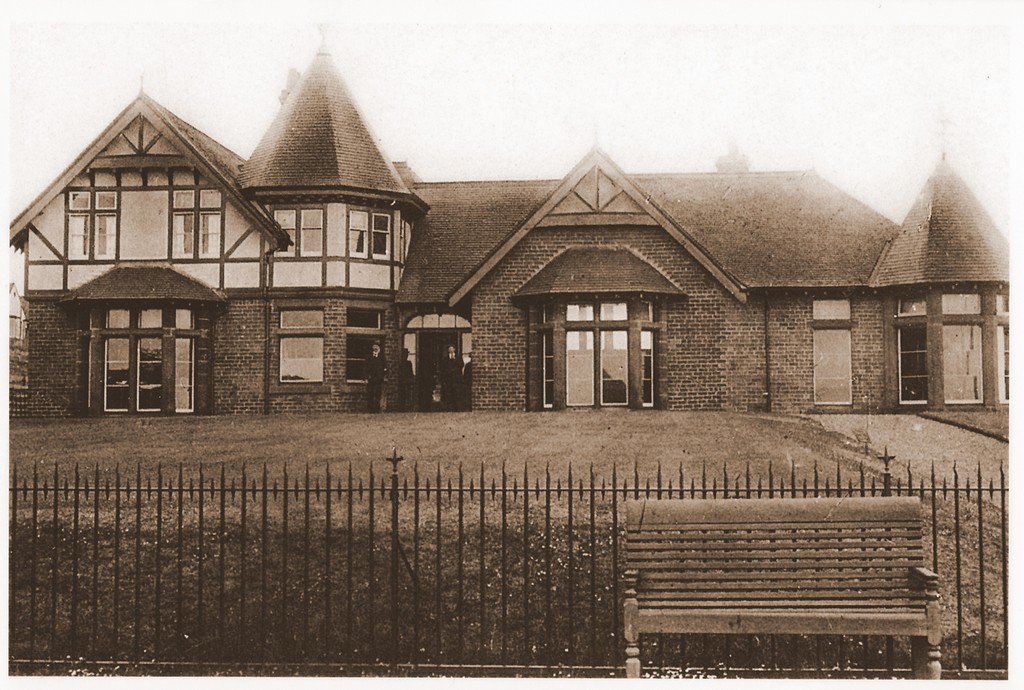

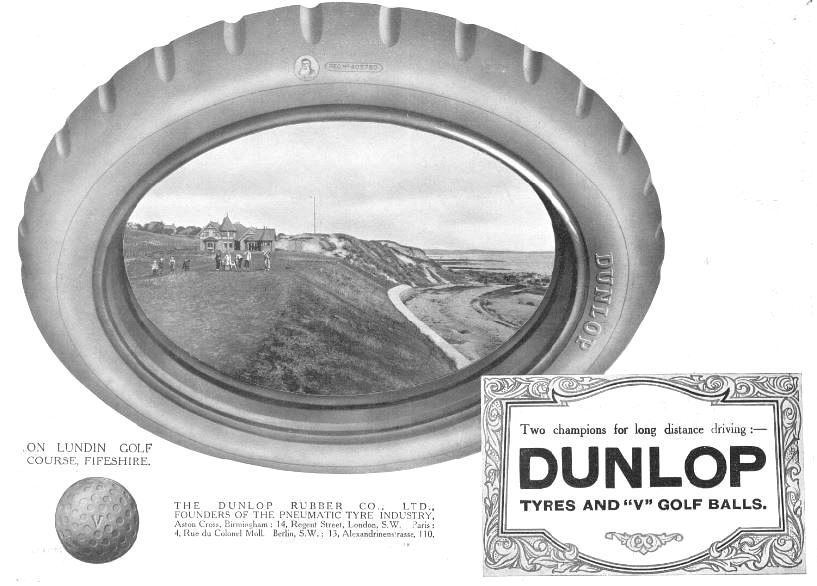
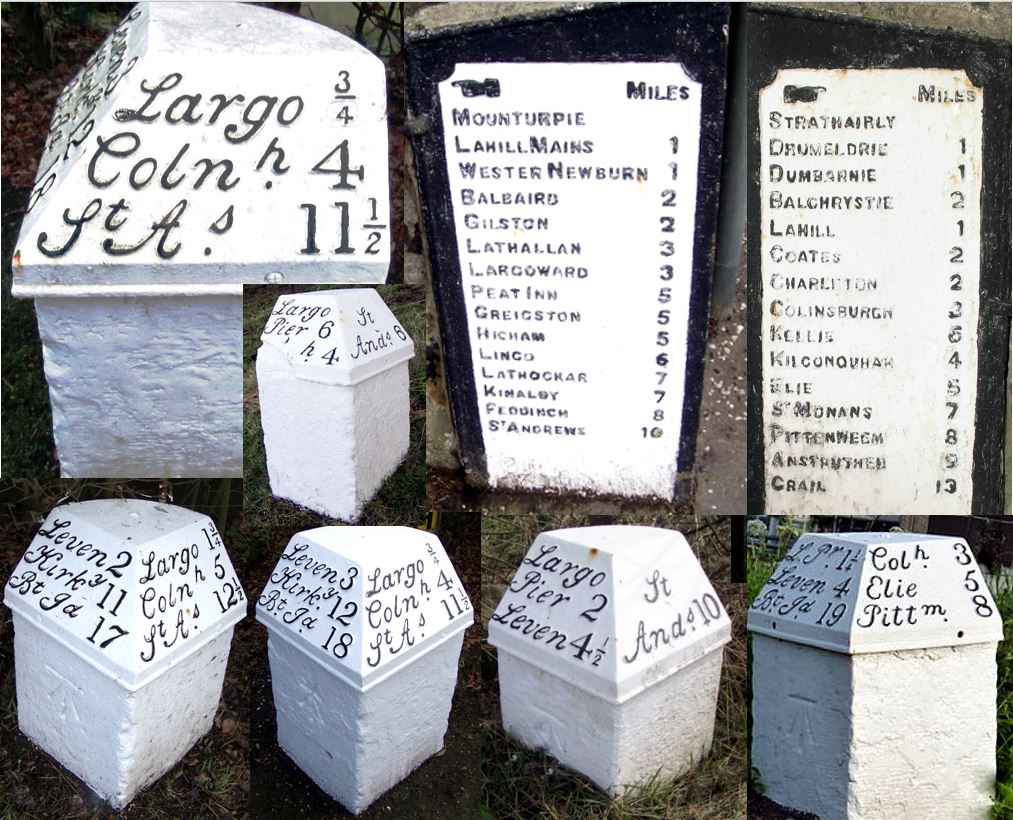



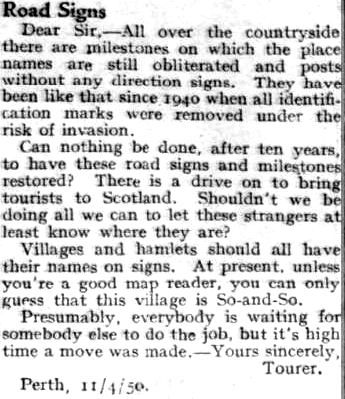
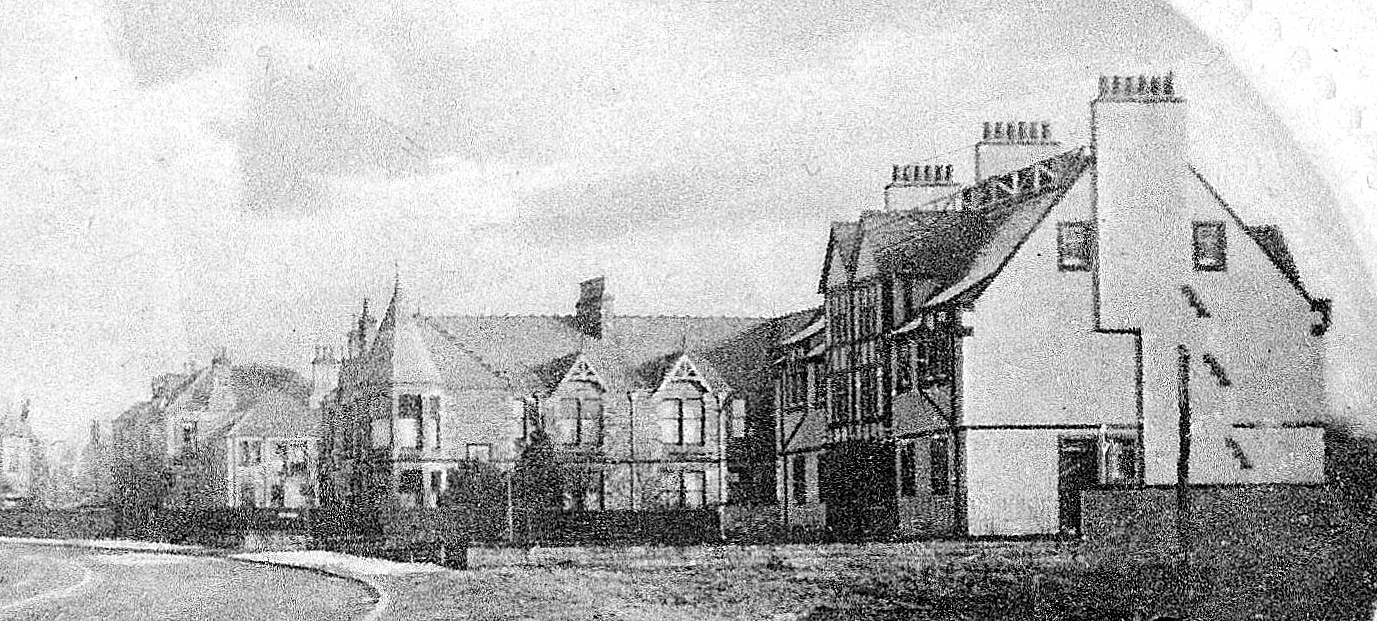
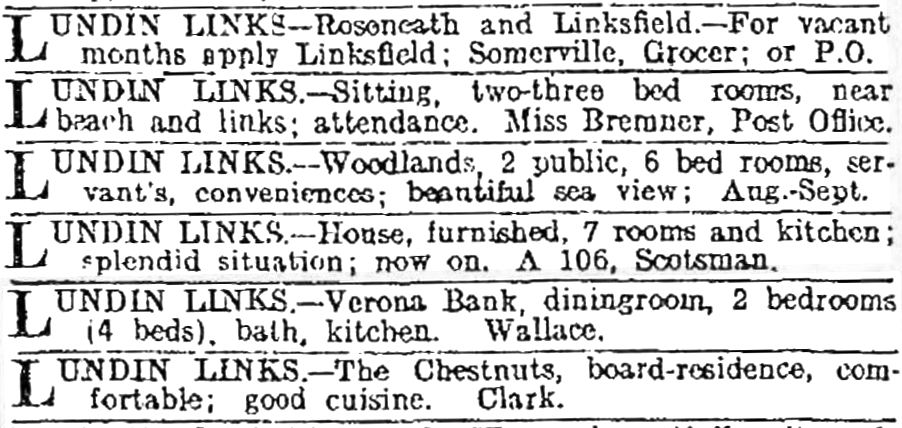



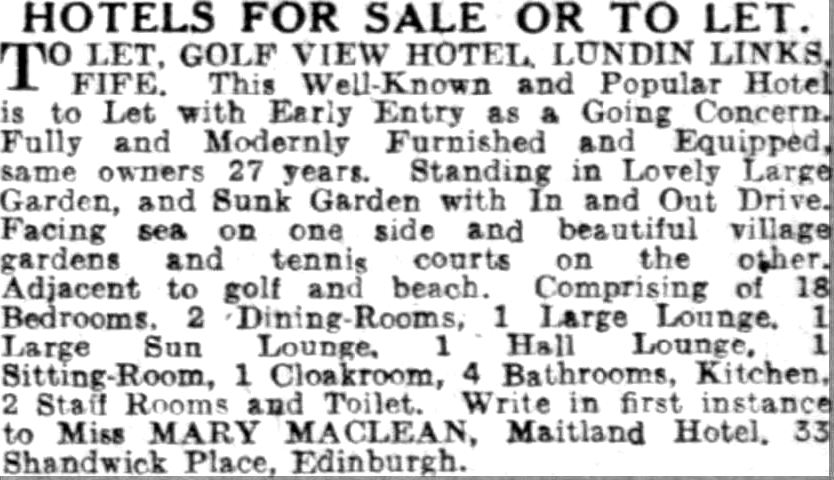
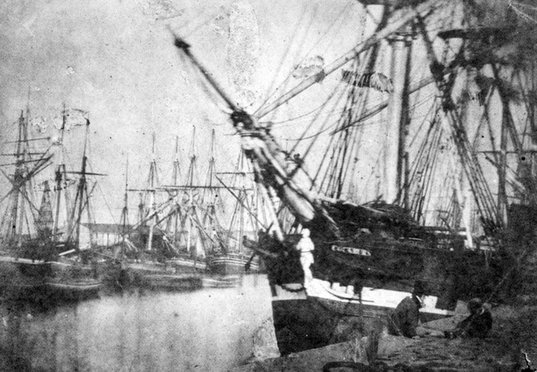


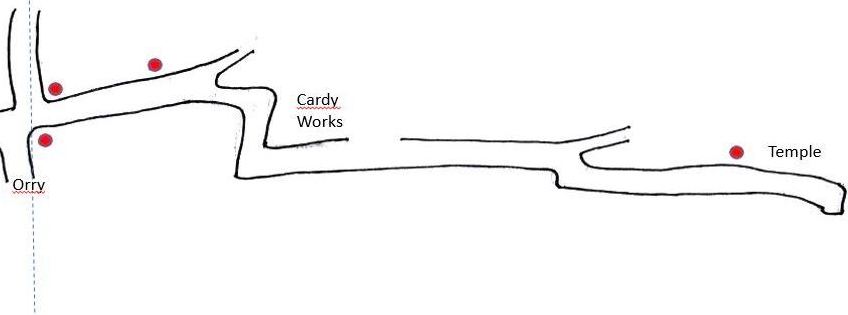

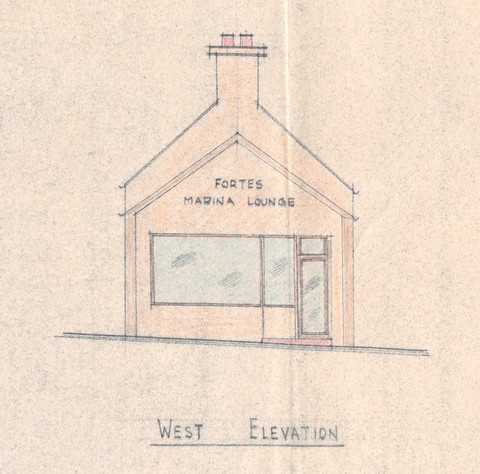
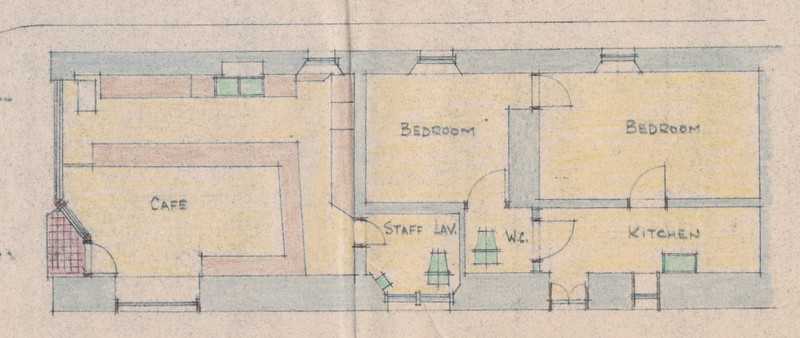


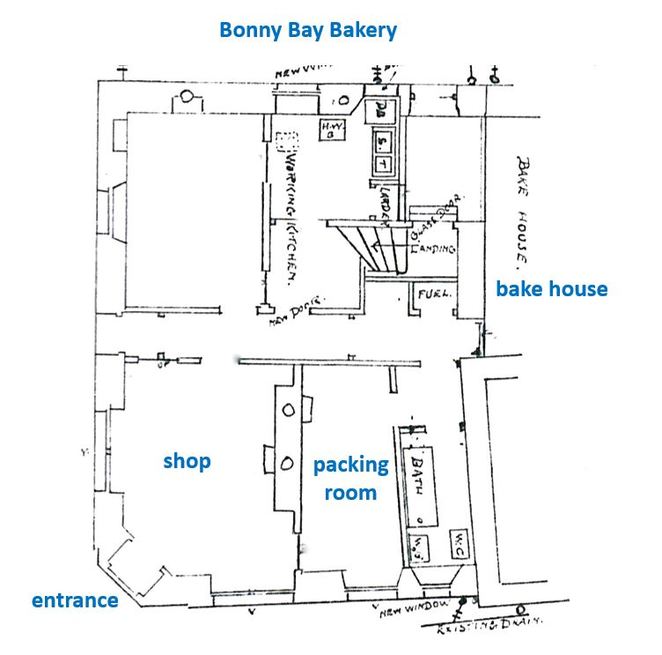
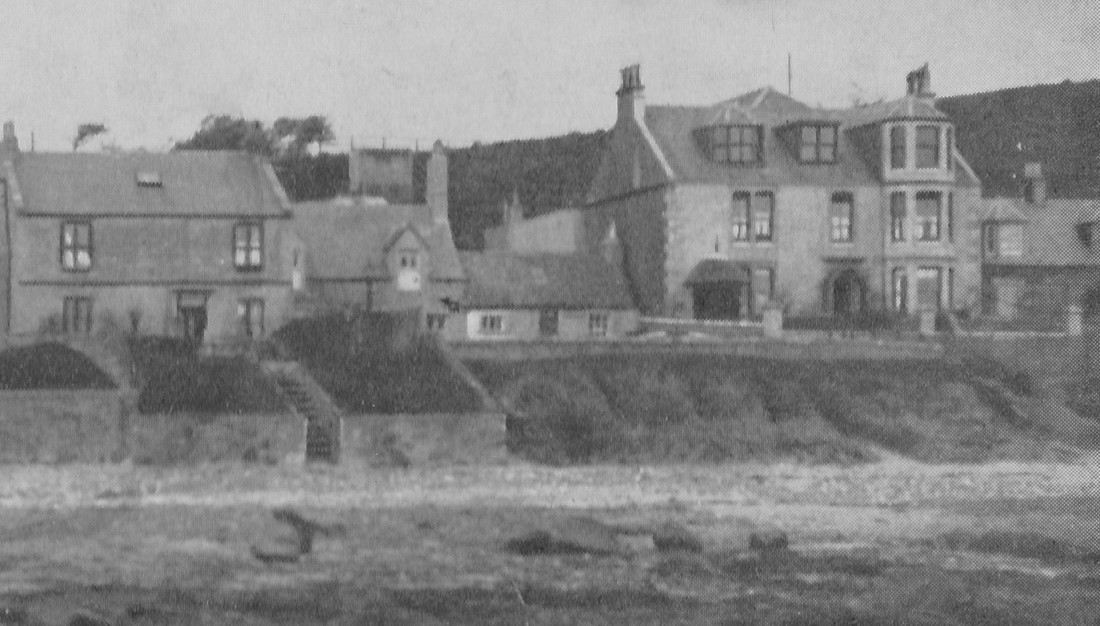
 RSS Feed
RSS Feed
